Chasing turkeys is one of the most thrilling forms of hunting. It can provide an exciting challenge and a great way to connect with nature. Turkey hunts require more preparation than other types of hunts, and there are some important tips to consider if you are just starting out.
Need some turkey hunting tactics for beginners in the upcoming thanksgiving season?
Stay tuned as we explore 10 turkey hunting tips for beginners so you can get the best bird this turkey season. Without any further ado, let’s jump right in!
10 Turkey Hunting Tips for Beginners
Call an Experienced Friend
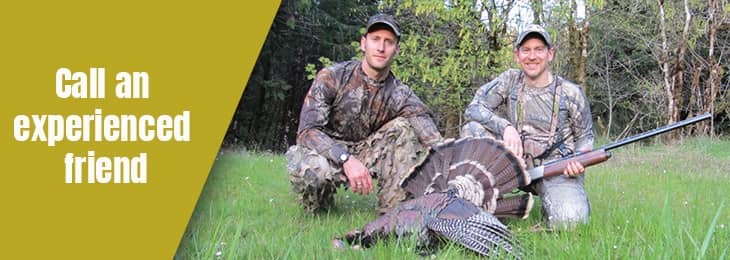
If you are new to turkey hunting, one of the best things you can do is find a friend who is experienced in turkey hunting and has successfully hunted.
If you know anyone with the skill, ask them to help you with some beginner turkey hunting tips and tricks.
Ask them for advice on areas to hunt, decoys to use, techniques such as calling and stalking, turkey tracks/turkey signs to look for, and any other first time turkey hunting tips they may have.
Most hunters are more than pleased to help someone to begin. There is a decent chance they will go with you if their schedule matches yours.
Hunting with a companion lets a rookie turkey hunter concentrate on the environment while letting their buddy do the calling. They can also help you explore different turkey scouting strategies for beginners.
Having somebody use mouth calls from 20 yards behind the shooter will also assist in getting turkeys nearer for an effective shot.
Carry Basic Gear
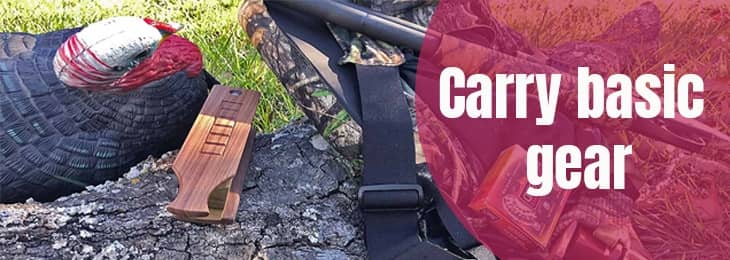
Although this one might sound like a no-brainer to many of you, there are some people who know very little about basic hunting gears. This is one of the turkey hunting tips for beginners with no prior hunting experience.
When it comes to gear, there are a few items that will make your turkey hunt much easier and enjoyable.
First, you need to have a quality shotgun and ammunition. Be sure to pick the right shot size for turkey hunting, as this will determine the effectiveness of your firearm. More on that later.
Find a gun that doesn’t gloss or stand out. A camouflaged or black-matte finish will do great. If you prefer long-range hunting, use choke tubes on your shotgun. You can also use camouflaged tape to cover the glossy metallic surfaces.
The decision on what turkey-call to use depends on personal preference. If you are unsure, start with a basic mouth call or slate call, as these are the easiest to learn.
Also, make sure you have an appropriate blind for your hunt. Blinds are great for concealing movement and making it easier to stay hidden from the curious hens and poults.
It is essential to wear the right clothes. Camouflage or earth tones are best; they will help you blend in with your surroundings. Choose comfortable clothing that allows for ease of movement and range of motion. Don’t forget your hat, gloves, and facemask.
Wear knee-high rubber or neoprene boots in wet zones, ankle-high hiking boots if you go through a lot of ground during hunting, and knee-high boots to keep you safe in snake territories.
Coat your dress to match the climate. If it’s rainy, you’ll want decent rain gears as well.
Finally, make sure you have a reliable knife and a pair of quality hunting binoculars. These two items will be invaluable for your hunt. You’ll also need:
- A decoy
- A rangefinder
- A hunting headlamp or a flashlight
- A turkey vest with a backrest
Wake up Early
Hunting turkeys in the center of the day is conceivable. However, the vast majority of turkeys are marked in the first hour of hunting.
Getting an early start is imperative; if you sleep in too late, you may miss out on your chance at a turkey. Most beginner turkey hunters don’t realize how early they must be in the woods. The best time to get into position is around 4:00-4:30 AM.
You’ll need to wake up before dawn to be positioned when the turkeys start moving and calling. It’s domineering to be in your spot well early in the morning before sunrise.
Setting Up Turkey Decoys
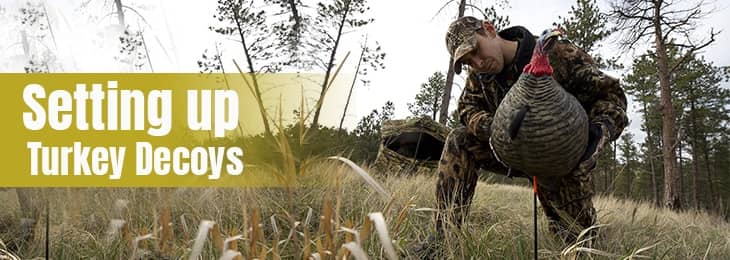
Another one of the great turkey hunting tips for beginners is using turkey decoys strategically. Using turkey decoys can be a great way to increase your chances of success. A decoy can act as an attractor for the birds and draw them in closer than they would come otherwise.
Set up multiple decoy types, such as a hen and jake (male) decoy, a lone hen decoy and a dominant tom decoy.
Also, position the decoys in an area visible to the turkeys. You can place them near brush piles or logs, up against trees, or in open areas. Make sure they are placed at a height where you can easily take a shot.
When setting up the decoys, be sure to position them in a realistic manner. Turkeys are social birds, and they will respond more positively if the decoys are placed in natural postures that they would take when communicating with one another.
Lastly, use some form of motion on your decoy to draw attention; this could be a spinning decoy or a jerk cord. You can also use turkey feathers to make the decoy look more realistic.
Use Calling
Calling is an essential part of turkey hunting and can be done with various techniques. The most common calls are yelps, purrs, clucks and kee-kees.
Using calls correctly can help draw the birds closer for a better shot. If you are a newbie, practice your calling before you go out to make sure it sounds realistic.
If you need to gain skill in calling turkeys, look into many recordings of turkey calls. This will help you in getting familiar with the natural sound of a wild turkey.
Yelps imitate the sound of hens; they can also be used to locate birds in the area. Purrs are used to communicate contentment, while clucks and kee-kees are used to communicate excitement or distress.
If you are a newbie, a box call is recommended. They are the easiest to use. In case you’re not that skilled, but have the basic idea, use push-button calls. They are more than satisfactory.
Here’s a video guide to show you how to use turkey mouth calls efficiently.
Study Turkey Behavior
You’ll need to be familiar with the behaviors and motives for those behaviors of any animal you’re hunting. Knowing the habit is a big deal.
If you distinguish why a turkey flies down from its roost after sunrise, you will know precisely where to sit in the initial daylight.
The same way, if you recognize what time of year turkeys initiate mating, you will know when is the right time to bait in nervous toms and excited hens and the best calls to use that time of year.
Before heading out, take some time to do research on the areas you want to hunt and familiarize yourself with the terrain. When scouting, look for signs of turkeys, such as droppings or dusting sites.
Also, search for strutting zones, where toms like to strut and display. Study the behavior of the birds you are hunting and their habitat preferences.
Learning turkey behavior can greatly increase your chances of success. Turkeys are creatures of habit and will take the same paths each morning and evening in search of food.
When scouting, look for areas with thick vegetation, such as cedars or pines; this is a preferred cover by turkeys. Also, search for open fields with bare spots and food sources like acorns.
Use Your Senses
Turkey hunters are for the most part, heavily reliant on their senses. Turkeys will start calling in the early morning hours and you should be able to locate them by sound.
Listen for gobbling from roosting birds, as well as yelps from hens and jakes. You can also listen for the crunching of leaves and twigs underfoot as turkeys search for food in the woods.
If a group of turkeys approaches you, pick a bird or two before they get near you. Hens are off-limits throughout spring times. They will be smaller, have cloudier plumage, and their heads will be lighter in color and less marked.
Male turkeys will be bigger, and their heads will be bright red with a touch of white and blue. When they get close, take your time to study them; avoid any rushed shots.
When hunting in the woods, be aware of your surroundings. Listen for distant gobbling and scratching as signs that birds are near. Be patient and observe until you have a clear shot at a bird.
Guns & Ammunition
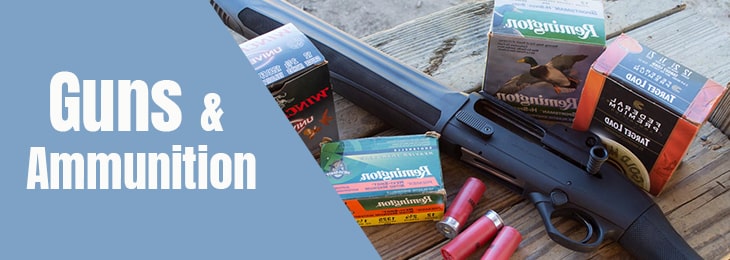
Turkeys are very tough birds, and you will need a gun capable of taking them down. Using a 12-gauge shotgun with an open choke is recommended when hunting turkey. Younger people and some females also use 20-gauge shotguns for turkey hunting.
The most common turkey loads are Hevi-Shot or lead turkey shots from No. 4 through No. 8. Several hunters prefer #4 or #6, but #5 seems to be the well-pleased medium.
Choose turkey loads with enough knockdown power to get the job done. For lethal shapes and sufficient knockdown power, go with the #5 shots. To generate a malicious shape, an extra full turkey choke is mandatory.
Shot Placement
Nobody likes spattering pellets out at the dinner table. So, shotgun hunters should take headshots directly.
To make a clean and ethical kill, you must know where to shoot birds. Turkeys are large birds, so aiming small is not an option here. Aim for the head/neck area for clean kills.
As a gobbler comes into range, delay for him to pop his head up.
This will ensure it does not run off after being shot and suffering needlessly. When shooting turkeys, avoid shooting at the wings or body, as these shots can disable the bird and cause it to suffer.
As you’re hunting with a shotgun, remember to lead the bird depending on how fast it’s moving. This will help ensure a clean kill without causing unnecessary suffering.
After the Shot

When hunting, you must be prepared for the shot and what comes next. A well-located shot inside the range should fall a turkey instantly.
If they jump to run off, taking an instant follow-up shot is recommended. You don’t want to let that bird get out of vision. Subsequently, the bird knocks the ground; you will want to tag him immediately before moving him.
If the bird starts running after the shooting, remember to call it down by yelping or clucking. This will help locate the bird in case. Once located, take your time to approach the bird with caution.
Don’t overlook snapping some decent photos. That big turkey will appear a lot better in the forests/field than he will in a garage or the backside of a truck.
Turkey Hunting Rules and Regulations
Turkey hunting is regulated in each state to ensure the safety of both hunters and turkeys. Before you go out on your hunt, make sure that you are aware of all of the rules and regulations regarding turkey hunting.
You can find these rules in the state or regional hunting laws. Some of these rules may include having a valid license, permissible hunting methods, and bag limits.
Also be sure to familiarize yourself with local regulations for areas such as national parks, wildlife refuges, and other restricted areas. Respect the land and wildlife by following the regulations.
And with that, we’ve reached the end of our today’s guide. Hunting birds is somewhat complicated, and the situation can become more confusing as turkeys are cunning and always on alert.
FAQs
What Are the Best Conditions for Turkey Hunting?
The best conditions for turkey hunting are usually early in the morning or late in the evening when the birds are more active and less disturbed. You should also scout out areas with plenty of food sources and places that turkeys like to roost, such as thickets or ridges.
What Color Should You Not Wear Turkey Hunting?
When turkey hunting, you should avoid wearing bright colors such as red, white, and blue. Bright colors can easily spook turkeys away from your area so it is best to wear earth tones like brown or green. Additionally, camo clothing will help you blend in with the environment and make it easier to remain undetected.
Does Scent Matter for Turkey Hunting?
Yes, scent can be a factor when turkey hunting. Turkeys have an incredibly strong sense of smell and any foreign scents in the area can spook them away. To avoid this, try to minimize your scent as much as possible by avoiding fragrances or lotions before you go hunting. Showering with unscented soap, wearing rubber boots, and using scent-neutralizing detergents for your clothing also helps.
What Are Wild Turkeys Afraid of?
Wild turkeys can be easily scared away by loud noises, strange smells, and bright colors. You should also avoid making sudden movements or shining lights at them as this will startle them and cause them to flee the area. It is important to remain quiet and still so that you don’t spook the birds away from your hunting spot.
Where Can Turkeys Be Found?
Turkeys can typically be found in wooded areas, fields, and near water sources. Turkeys tend to flock together so it’s best to look for groups of birds when scouting out turkey hunting spots. Additionally, turkeys will usually roost overnight in tall trees or thickets, so these areas are also good places to look for them.


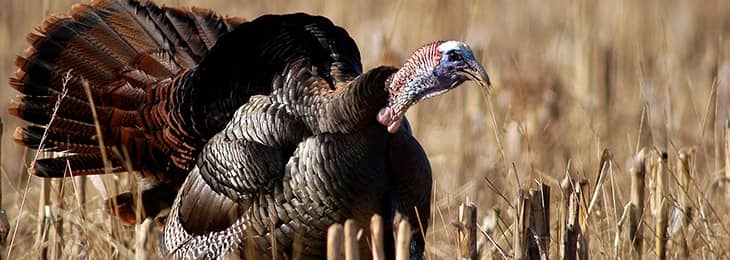




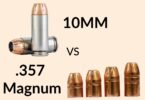


Leave a Comment